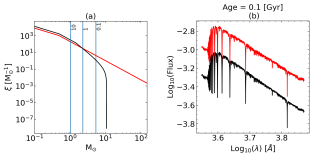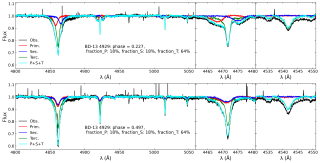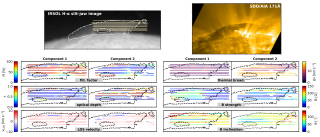GTC/OSIRIS spectrum of BG1429+1202 showing strong Lyman-Alpha emission as well as strong absorptions from its interstellar medium and stellar winds. In insets panels, DECaLS grz color image, GTC g-band, and WHT i-band of BG1429+1202 are shown.
Advertised on
References
In the phenomenon of gravitational lensing, predicted by Einstein's General Theory of Relativity, the mass of a galaxy acts on the light of a more distant object, as if it were a huge lens, producing a distorted image with the form of a so-called Einstein ring or multiple images and a magnification of the total flux, allowing to see details which would otherwise be too faint to detect. GTC/OSIRIS spectroscopic observations allowed to discover one of the brightest galaxies in the early Universe, BG1429+1202, located at a redshift of 2.82 (we see it as it was some 2,300 million years after the Big Bang). BG1429+1202 is a Lyman-Alpha Emitting galaxy (LAE) gravitationally lensed by a massive Early Type galaxy close to the line of sight at a redshift of 0.55. Although typical LAEs are faint and not very luminous, BG1429+1202 is not only apparently bright but also intrinsically very luminous after accounting for the lensing magnification, showing indications of massive star formation. This galaxy-scale strong gravitational system was found in the BELLS GALLERY project that analysed around a million and a half spectra of galaxies obtained with the Sloan Telescope, at the Apache Point Observatory in New Mexico (USA), by the BOSS survey, part of the Sloan Digital Sky Survey III.



